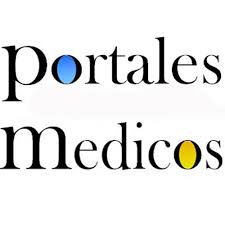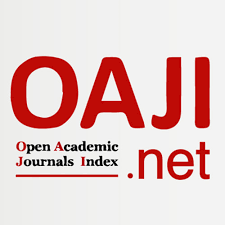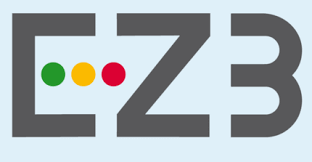El arte de investigar: calidad, validez y responsabilidad en la práctica científica
Resumen
DOI: https://doi.org/10.53766/AcBio/2025.15.29.05
La investigación científica exige el cumplimiento del trinomio calidad, validez y responsabilidad, valores fundamentales que contribuyen a la transparencia y eficacia en el campo tecnocientífico. En este sentido, es importante resaltar que la calidad asegura que la investigación se realice de manera confiable y sólida, la validez garantiza que los resultados sean representativos y aplicables, y la responsabilidad da cuenta de que la investigación se lleve a cabo de manera ética, protegiendo los derechos y el bienestar de los participantes. Estos tres elementos trabajan de manera articulada para beneficiar la integridad de los resultados y la confianza de la comunidad científica, lo que conduce a avances verdaderamente significativos en la ciencia y mejoran su impacto en la sociedad. El presente trabajo busca proporcionar detalles concretos y ejemplos relacionados con la calidad, la validez y la responsabilidad, de modo que una buena comprensión de estos conceptos permita a los investigadores aplicar buenas prácticas científicas en la consecución de proyectos de investigación.
Recibido: 24/06/2024
Aceptado: 1/07/2024
Publicado en línea: 26/10/2024
Palabras clave
Texto completo:
PDFReferencias
Beveridge WIB. El arte de la investigación científica. Caracas: Universidad Central de Venezuela, Ediciones de la Biblioteca, 1996.
Thomas, CG. Research methodology and scientific writing. Thrissur: Springer, 2021.
Marczyk, GR, DeMatteo, D, Festinger, D. Essentials of research design and methodology. Hoboken: John Wiley & Sons, 2005.
Machin, MJ, Campbell, D. Design of studies for medical research. Chichester: John Wiley & Sons, 2005.
Tamayo y Tamayo, M. El proceso de la investigación científica. México: Editorial Limusa, 2003.
Johnson JL, Adkins D, Chauvin S. Review of the Quality Indicators of Rigor in Qualitative Research. Am. J. Pharm. Educ. 2020;(1):7120. https://doi.org/10.5688/ajpe7120.
Tejedor, FJ. Validez interna y externa en los diseños experimentales. Rev. Esp. Pedagog. 1981;39(151):15?39. Disponible en: https://www.jstor.org/stable/23763072.
Ioannidis, JPA. Why most published research findings are false. PLoS Medicine. 2005;2(8):e124. https://doi.org/10.1371/journal.pmed.0020124
Contreras, RR. Bioética reto de la posmodernidad. Mérida: Fudacite-Mérida, 2005. Disponible en: http://www.serbi.ula.ve/serbiula/librose/pva/libros/bioetica.html
Goodyear, MD, Krleza-Jeric, K, Lemmens, T. The declaration of Helsinki. BMJ, 2007;335(7621),624?625. https://doi.org/10.1136/bmj.39339.610000.BE.
Beauchamp, TL. The origins and drafting of the Belmont Report. Perspect. Biol. Med. 2020;63(2):240-250. https://doi.org/10.1353/pbm.2020.0016.
Rollin, B. E. Animal research: a moral science. Talking Point on the use of animals in scientific research. EMBO Reports. 2007;8(6):521–525. https://doi.org/10.1038/sj.embor.7400996
León, JB. El ambiente. Paradigma del nuevo milenio. Caracas: Editorial Alfa, 2009.
Jaimes, R. Origen y destino del conocimiento científico. Caracas: Fondo Editorial Tropykos, 1998.
Glasziou, P. Assessing the quality of research. BMJ. 2004;328(7430):39–41. https://doi.org/10.1136/bmj.328.7430.39
Marquart, F. Methodological rigor in quantitative research. The International Encyclopedia of Communication Research Methods. 2017:1?9. https://doi.org/10.1002/9781118901731.iecrm0221
Bordens, KS, Abbott, BB. Research Design and Methods: A Process Approach. Eighth edition. New York: McGraw-Hill Companies, 2011.
De Silva, PUK, Vance, CK. Preserving the Quality of Scientific Research: Peer Review of Research Articles. In: Scientific Scholarly Communication. Fascinating Life Sciences. Springer, Cham. 2017:73?99 https://doi.org/10.1007/978-3-319-50627-2_6.
Contreras, RR. Ética y antiética en la práctica científica. Luces y oscuridades en el desarrollo de las ciencias. Mérida: Ediciones del Vicerrectorado Académico de la Universidad de los Andes, 2016. Disponible en: https://www.researchgate.net/publication/313141398_Etica_y_antietica_en_la_practica_cientifica_Luces_y_oscuridades_en_el_desarrollo_de_la_ciencias
Nosek, BA, Spies, JR, Motyl, M. Scientific Utopia: II. Restructuring incentives and practices to promote truth over publishability. Perspect. Psychol. Sci. 2012;7(6),615?631. https://doi.org/10.1177/1745691612459058
Hubbard, DW, Carriquiry, AL. Quality control for scientific research: Addressing reproducibility, responsiveness, and relevance. Am. Stat. 2019;73(sup1):46?55. https://doi.org/10.1080/00031305.2018.1543138
Wilholt, T. Bias and values in scientific research. Stud. Hist. Philos. Sci. Part A. 2009;40(1),92?101. https://doi.org/10.1016/j.shpsa.2008.12.005
Horner, J, Minifie, FD. Research Ethics III: Publication Practices and Authorship, Conflicts of Interest, and Research Misconduct. JSLHR. 2011;54(1):S346?S362. https://doi.org/10.1044/1092-4388(2010/09-0263).
Antes, G. The new CONSORT statement. BMJ. 201;340:c1432–c1432. https://doi.org/10.1136/bmj.c1432
Handley, MA, Lyles, CR, McCulloch, C, Cattamanchi, A. Selecting and Improving Quasi-Experimental Designs in Effectiveness and Implementation Research. Annu. Rev. Public Health. 2018;39(1),5–25. https://doi.org/10.1146/annurev-publhealth-040617-014128.
Cook, DA, Beckman, TJ. Current concepts in validity and reliability for psychometric instruments: Theory and application. Am. J. Med. 2006;119(2):166.e7?166.e16. https://doi.org/10.1016/j.amjmed.2005.10.036.
Rothwell, PM. External validity of randomised controlled trials: “To whom do the results of this trial apply?” The Lancet. 2005;365(9453):82–93. https://doi.org/10.1016/s0140-6736(04)17670-8.
Rothwell, PM. Factors That Can Affect the External Validity of Randomised Controlled Trials. PLoS Clin. Trials. 2006;1(1):e9. https://doi.org/10.1371/journal.pctr.0010009
Schwasinger-Schmidt, TE, Macaluso. Other Antidepressants. Handb. Exp. Pharmacol. 2019;250:325?355. https://doi.org/10.1007/164_2018_167
Kanj, S.S, Bassetti, M, Kiratisin, P, Rodrigues, C, Villegas, MV, Yu, Y, van Duin, D. Clinical data from studies involving novel antibiotics to treat multidrug-resistant Gram-negative bacterial infections. Int. J. Antimicrob. Agents. 2022;60(3):106633. https://doi.org/10.1016/j.ijantimicag.2022.106633
Asare, M, Popelsky, B, Akowuah, E, Lanning, BA, Montealegre, JR. Internal and External Validity of Social Media and Mobile Technology-Driven HPV Vaccination Interventions: Systematic Review Using the Reach, Effectiveness, Adoption, Implementation, Maintenance (RE-AIM) Framework. Vaccines. 2021;9(3): 197. https://doi.org/10.3390/vaccines9030197
Boutron, I, Page, MJ, Higgins, JP, Altman, DG, Lundh, A, Hróbjartsson, A. Considering bias and conflicts of interest among the included studies. Cochrane Handbook for Systematic Reviews of Interventions. 2019; chapter 7:177–204. https://doi.org/10.1002/9781119536604.ch7.
Song, F, Parekh, S, Hooper, L, Loke, YK, Ryder, J, Sutton, AJ, Hing, C, Kwok, CS, Pang, C, Harvey, I. Dissemination and publication of research findings: an updated review of related biases. Health Technol. Assess. 2010;14(8):iii, ix-xi, 1-193. https://doi.org/10.3310/hta14080.
Sterne, JA, Hernán, MA, Reeves, BC, Savovic, J, Berkman, ND, Viswanathan, M, … Higgins, JP. ROBINS-I: a tool for assessing risk of bias in non-randomised studies of interventions. BMJ, 2016;355:i4919. https://doi.org/10.1136/bmj.i4919.
Higgins, JPT, Altman, DG, Gotzsche, PC, Juni, P, Moher, D, … Oxman, AD. The Cochrane Collaboration’s tool for assessing risk of bias in randomised trials. BMJ;2011;343:d5928–d5928. https://doi.org/10.1136/bmj.d5928
Greenland, S, Morgenstern, H. Confounding in Health Research. Annu. Rev. Public Health. 2001;22(1):189–212. https://doi.org/10.1146/annurev.publhealth.22.1.189
Upadhya, B, Kozak, PM, Stacey, RB, Vasan, RS. Newer Drugs to Reduce High Blood Pressure and Mitigate Hypertensive Target Organ Damage. Curr. Hypertens. 2022;24(1):1–20. https://doi.org/10.1007/s11906-022-01166-9
van Dam, RM, Hu, FB. Caffeine consumption and cardiovascular health. Nat. Rev. Cardiol. 2022;19:429–430. https://doi.org/10.1038/s41569-022-00719-4
Chalmers, I, Glasziou, P, Godlee, F. All trials must be registered and the results published. BMJ;2013,346:f105. https://doi.org/10.1136/bmj.f105
Murrough, JW, Yaqubi, S, Sayed, S, Charney, DS. Emerging drugs for the treatment of anxiety. Expert. Opin. Emerg. Drugs. 2015;20(3):393?406. https://doi.org/10.1517/14728214.2015.1049996
Chen, TT, Mak, TC, Ng, SS, Wong, TW. Attentional Focus Strategies to Improve Motor Performance in Older Adults: A Systematic Review. Int. J. Environ. Res. Public. Health. 2023;20(5):4047. https://doi.org/10.3390/ijerph20054047
Niskala, J, Kanste, O, Tomietto, M, Miettunen, J, Tuomikoski, AM, Kyngäs, H, Mikkonen, K. Interventions to improve nurses’ job satisfaction: A systematic review and meta-analysis. J. Adv. Nurs. 2020;76(7):1498?1508. https://publons.com/publon/10.1111/jan.14342
Gillet, B, Schwab, DP. Convergent and discriminant validities of corresponding Job Descriptive Index and Minnesota Satisfaction Questionnaire scales. J. Appl. Psychol. 1975;60(3):313–317. https://doi.org/10.1037/h0076751
Bland, JM, Altman, DG. Statistics notes: Cronbach’s alpha. BMJ. 1997;314(7080):572–572. https://doi.org/10.1136/bmj.314.7080.572
Sultan, S, Murarka, S, Jahangir, A, Mookadam, F, Tajik, AJ, Jahangir, A. Vitamins for Cardiovascular Diseases: Is the Expense Justified? Cardiol. Rev. 2017;25(6): 298–308. https://doi.org/10.1097/crd.0000000000000150
Fried, ND, Gardner, JD. Heat-not-burn tobacco products: an emerging threat to cardiovascular health. Am. J. Physiol. Heart. Circ. Physiol. 2020;319(6):H1234-H1239. https://doi.org/10.1152/ajpheart.00708.2020
Leppink, J. Analysis of covariance (ANCOVA) vs. moderated regression (MODREG): Why the interaction matters. Health Prof. Educ. 2018;4(3):225?232. https://doi.org/10.1016/j.hpe.2018.04.001
Regehr, C, Glancy, D, Pitts, A. Interventions to reduce stress in university students: A review and meta-analysis. J. Affect. Disord. 2013;148(1), 1–11. https://doi.org/10.1016/j.jad.2012.11.026
Lamb, YN. Rosuvastatin/Ezetimibe: A Review in Hypercholesterolemia. Am. J. Cardiovasc. Drugs. 2020;20(4):381?392. https://doi.org/10.1007/s40256-020-00421-1
Stahle, L, Wold, S. Analysis of variance (ANOVA). Chemom. Intell. Lab. Syst. 1989;6(4):259–272. https://doi.org/10.1016/0169-7439(89)80095-4
Pawlik, TM, Sosa, JA (Eds.). Clinical Trials. Switzerland: Springer, 2020.
Schildmann, J, Sandow, V, Rauprich, O, Vollmann, J. Human Medical Research. Basel: Springer, 2012.
Rollin, BE. Animal research: a moral science. Talking Point on the use of animals in scientific research. EMBO Rep. 2007;8(6):521–525. https://doi.org/10.1038/sj.embor.7400996
Macleod, M. R., Michie, S., Roberts, I., Dirnagl, U., Chalmers, I., Ioannidis, J. P. A., Salman R A-S, Chan, A-W, Glasziou, P. Biomedical research: increasing value, reducing waste. The Lancet. 2014;383(9912):101–104. https://doi.org/10.1016/s0140-6736(13)62329-6
Sims, JM. A brief review of the Belmont report. Dimens. Crit. Care Nurs. 2010;29(4):173?174. https://doi.org/10.1097/DCC.0b013e3181de9ec5
Parsa-Parsi, R. W. The international code of medical ethics of the world medical association. JAMA. 2022;328(20):2018?2021. https://doi.org/10.1001/jama.2022.19697
Castillo Valery, A. Bioética. Caracas: Ediciones Disinlimed, 2006.
MPPCTII. Código de Ética para la Vida. Caracas. Ediciones del MPPCTII, 2011.
Russell, W. M. S. The Development of the Three Rs Concept. ATLA. 1995;23(3):298–304. https://doi.org/10.1177/026119299502300306
Rubin, GM. Drosophila melanogaster as an experimental organism. Science. 1988;240(4858):1453?1459. https://doi.org/10.1126/science.3131880.
Corsi, AK, Wightman, B, Chalfie, M. A Transparent Window into Biology: A Primer on Caenorhabditis elegans. Genetics. 2015;200(2):387?407. https://doi.org/10.1534/genetics.115.176099.
Pollino, CA, Holdway, DA. Potential of two hydra species as standard toxicity test animals. Ecotoxicol. Environ. Saf. 1999;43(3):309?316. https://doi.org/10.1006/eesa.1999.1796
Ji, J, Robbins, M, Featherstone, JD, Calabrese, C, Barnett, GA. Comparison of public discussions of gene editing on social media between the United States and China. Plos One. 2022;17(5):e0267406. https://doi.org/10.1371/journal.pone.0267406
Vaught, J, Rogers, J, Myers, K, Lim, MD, Lockhart, N, Moore, H, Sawyer, S, Furman, JL, Compton, C. An NCI perspective on creating sustainable biospecimen resources. JNCI Monographs. 2011;(42):1–7. https://doi.org/10.1093/jncimonographs/lgr006.
Hewitt, RE. Biobanking: the foundation of personalized medicine. Curr. Opin. Oncol. 2011;23(1):112?119. https://doi.org/10.1097/CCO.0b013e32834161b8.
Schully, SD, Carrick, DM, Mechanic, LE, Srivastava, S, Anderson, GL, Baron, JA, … Ransohoff, DF. Leveraging Biospecimen Resources for Discovery or Validation of Markers for Early Cancer Detection. JNCI: J. Natl. Cancer. Inst. 2015;107(4):djv012. https://doi.org/10.1093/jnci/djv012
DOI: https://www.doi.org/10.53766/AcBio/Se encuentra actualmente indizada en: | |||
 |  |  | |
  |  |  |  |
 |  |  |  |
 |  |  | |
![]()
Todos los documentos publicados en esta revista se distribuyen bajo una
Licencia Creative Commons Atribución -No Comercial- Compartir Igual 4.0 Internacional.
Por lo que el envío, procesamiento y publicación de artículos en la revista es totalmente gratuito.




